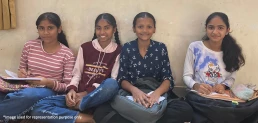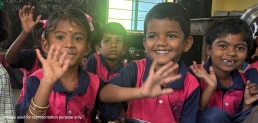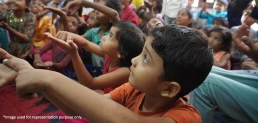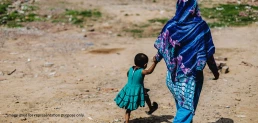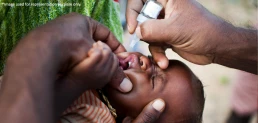Understanding Women’s Empowerment Through Education
Education is necessary for every individual to strive and contribute to society. But more importantly, with women, it’s not just one person but an entire generation. As household caretakers, women are tasked with important responsibilities such as raising children, ensuring community harmony, and passing on cultural and familial values. Women empowerment in education uplifts families, strengthens economies, and builds a more equitable society. Knowledge gives women the tools to make informed decisions, participate in the workforce, and speak up for themselves. However, women’s atrocities and neglect towards them still make basic access to education challenging, curbing their potential and that of future generations.
Also Read: Protecting Marginalized Girls
The Impact of Educating Women on Society
The sensitivity of women is what brings a society together. Hence, educating them can impact the surroundings in several ways:
- Economic Growth: Educated women can find work, take care of the family, and contribute to the growth of the national GDP (UNESCO).
- Better Healthcare: If women in the house are educated properly, they can care for the family and themselves, especially by reducing infant and maternal mortality rates (World Health Organization).
- Improved Child Education: Learned women can make sure that their children receive the right education, helping them shape their future successfully.
- Social Progress: Education helps break taboos and continuous cycles of discrimination, promotes gender equality, and challenges unjust societal norms.
Also Read: 10 Advantages of Girl Child Education
Challenges Women Face in Accessing Education
Gender Discrimination and Social Norms
Words are not enough to spread awareness. As prevalent in several societies, male education still takes precedence over female education, reducing women to nothing more than caretakers suitable for household chores (National Commission for Protection of Child Rights).
Lack of Financial Support and Infrastructure
Educating girls is still considered a financial burden. Multiple tuition, books, uniforms, and transportation costs prevent parents from educating their daughters (UNESCO Global Education Monitoring Report). Many rural areas also lack proper schools and safe learning environments, posing safety concerns for the girl child.
Early Marriages and Household Responsibilities
You might think that laws have prevented child marriage. But preparation for marriage, including teaching girls household chores or saving up for their marriage, still exists. Once married, they are expected to focus on household duties, leaving no room for them to complete their education, let alone pursue further studies.
Safety Concerns and Limited Mobility
Unsafe transportation and inadequate, below-par school facilities deter many girls from continuing their education. In several areas, harassment and physical violence further discourage families from sending them outside the home or to school (National Crime Records Bureau).
Success Stories of Women’s Empowerment Through Education
Even though the world might look like lost hope, countless women have overcome these barriers, rising like a Phoenix despite challenges:
- Malala Yousafzai, a Pakistani teenager, braved near death and life threats to advocate for girls’ education, becoming a global symbol of empowerment.
- Kalpana Saroj, once a child bride from India, pursued education and later became a successful entrepreneur, inspiring many.
- Sindhutai Sapkal, an abandoned child, empowered herself through knowledge and then went on to educate thousands of orphaned children.
Also Read: Rural Women Empowerment
Steps to Promote Women’s Empowerment Through Education
Once you educate a woman, you can see the difference they bring to society. To ensure this, we can focus on:
- Policy Reforms: Providing free and quality education for girls and financial incentives for families.
- Scholarships and Financial Aid: Expanding scholarship programs and financial assistance can help bridge significant economic gaps (UNESCO Global Education Monitoring Report).
- Safe Learning Environments: To encourage girls to enroll schools should install proper bathrooms, manage security, and offer transport options (World Bank).
Also Read: Educational Problems Faced by Girls in Remote Areas of India
How CRY Supports Women’s Empowerment Through Education
At CRY, we firmly believe in the power of education to transform lives. To do this, we primarily try to achieve the following:
- Enrol Girls in Schools: We work at the grassroots level to identify and enroll girls in school and ensure it progresses.
- Provide Learning Resources: We provide underprivileged girls with quality learning materials.
- Advocate for Policy Changes: We work alongside policymakers to push for stronger laws protecting and promoting girls’ education.
- Create Awareness Campaigns: Our programs involve different communities to discuss education and women empowerment and break social stigmas.
Also Read: Suggestions to Overcome Gender Stereotypes in India
How You Can Contribute to the Cause
Just advocating for change is not enough. If you wish to be a part of this movement, here’s how you can do it:
- Donate: Your contribution can help provide girls the opportunity to complete their education.
- Volunteer: Join awareness campaigns and help encourage young girls to pursue education wherever possible.
- Spread Awareness: Use your voice to advocate for girls’ education on every level.
Education is the sole foundation of empowerment. When we educate women, we invest in a stronger, more equal world. For more information on what we do and how we contribute to improving the world, follow us at https://www.cryamerica.org/.
Also Read: Forced Child Marriage
Recommended for you












